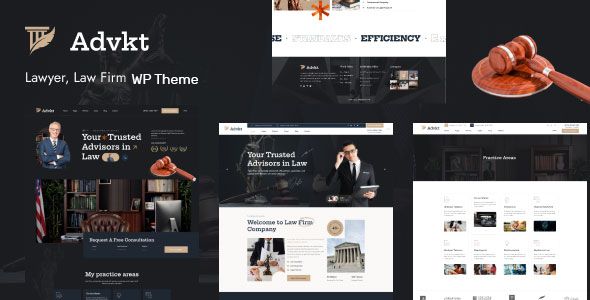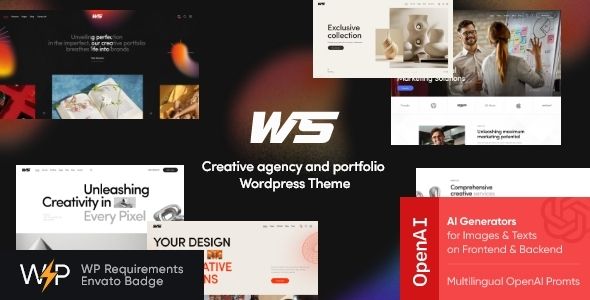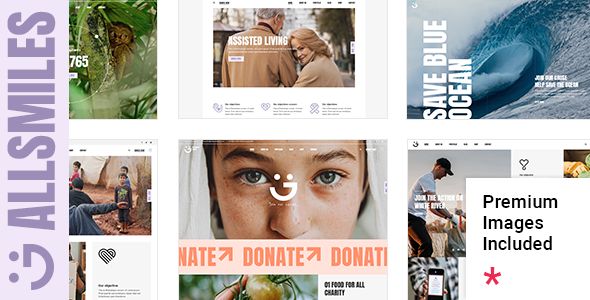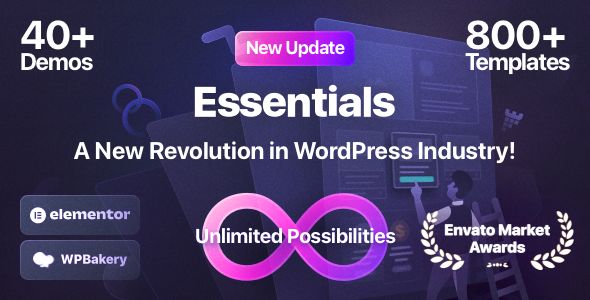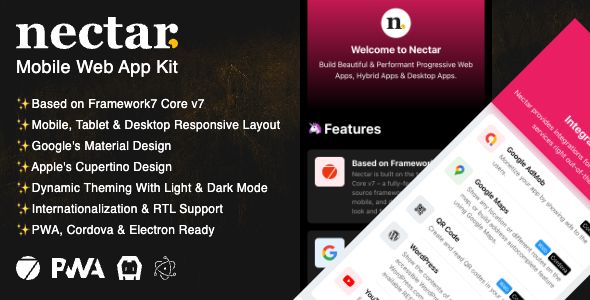SEOINUX – SEO & Digital Marketing Agency WordPress Theme

- Description
- Reviews
- FAQ

SEOINUX – SEO & Digital Marketing Agency WordPress Theme
License advantages first. This edition of SEOINUX – SEO & Digital Marketing Agency WordPress Theme comes as a license-free (under GPL) package that’s ready to use after install, includes all Pro features, supports unlimited sites, and syncs with the official release. In practical terms, your agency can launch a high-converting site today, spin up a separate lead-gen microsite for a specific service tomorrow, and clone a client showcase next month—without domain locks, serial activations, or renewal gates. Updates keep pace with upstream releases, so your stack stays compatible while you scale.
Product Overview
SEOINUX is a modern, conversion-focused WordPress theme crafted for SEO agencies, PPC shops, content studios, CRO consultants, analytics teams, and full-service digital marketing firms. Its layout philosophy is straightforward: get visitors to the one action that matters—book a consultation, request a proposal, or schedule a discovery call—while presenting your value in a crisp, low-friction narrative.
The design language is calm, credible, and sales-savvy: assertive headlines, measured whitespace, balanced typography, and sections that flow like a well-built landing page. Templates include service menus (SEO, PPC, Content, Local, Technical, Analytics), offer pages (Audits, Link Strategy, GA4/Server-Side Tagging), case study frameworks, pricing snapshots, comparison tables, FAQ accordions, and “Why Us” blocks with proof you can verify. Everything composes in a page-builder workflow so non-developers can ship pages quickly and iterate without breaking the rhythm.
SEOINUX is equally comfortable as a single-brand agency site or as a multi-site base powering client microsites, regional landing pages, and vertical-specific funnels. Because the package includes full features and unlimited site usage, agencies can standardize on one theme, keep visual tokens aligned, and publish faster than bespoke builds allow.
Who It’s For
-
SEO agencies selling holistic retainers (technical, content, links, local, reporting) that need credible case studies and an easy contact path.
-
Paid media specialists running Google/Meta/LinkedIn ads who want fast landing pages, conversion-oriented blocks, and compliant forms.
-
Content studios offering topical maps, long-form content, and editorial calendars with process transparency.
-
Analytics & CRO teams showcasing measurement frameworks, experimentation playbooks, and outcome dashboards.
-
Freelancers evolving into boutique firms who need a grown-up site that scales to multiple service lines and locations.
-
Agencies building client microsites—thanks to unlimited usage and update parity, cloning and maintaining fleets is operationally simple.
Core Philosophy
-
Make the next step obvious. Every page suggests a single action, with a secondary option for skimmers who aren’t ready yet.
-
Sell by teaching. The theme favors short, honest explanations over buzzword confetti.
-
Prioritize speed and clarity. Predictable above-the-fold content, lean scripts, and well-sized media reduce friction.
-
Design for reuse. Blocks are modular; one case study component serves multiple service pages without rework.
Key Capabilities & Real-World Use Cases
1) Consultation-first hero sections
Start with one CTA (Book a Strategy Call or Request a Free Audit) and a 12-word subhead describing the outcome (“Fix crawl waste, win intent, and compound revenue”). Add three proof chips—years operating, median traffic lift, vertical expertise. On mobile, keep the first click above the fold.
2) Service menus without jargon walls
SEOINUX ships with a service grid that organizes offerings into Technical SEO, Content & Topical Authority, Digital PR & Outreach, Local SEO, Paid Acquisition, Analytics & CRO. Each tile clarifies scope boundaries and deliverables in plain language, with a “how it works” micro-timeline (Discover → Prioritize → Execute → Iterate).
3) Case studies that decision-makers actually read
Use a tight Context → Intervention → Result format. Replace fluffy narratives with one real KPI trendline (e.g., non-brand clicks), a SERP feature snapshot, or a revenue delta. Pair with 3–4 punchy bullets: “Fixed dynamic rendering issues,” “Consolidated duplicate hubs,” “Reduced CLS from 0.25 to 0.04.” Respect the reader’s time.
4) Vertical-specific landing pages
Duplicate the Vertical template and localize for SaaS, E-commerce, Healthcare, Education, B2B Services, Local Franchises. Each page leads with an industry-aware problem statement and a small checklist showing unique constraints (e.g., HIPAA considerations, SKU depth, lead scoring).
5) Audits that feel like products
Package your audits (Technical, Content, Local, PPC) with a precise scope: data sources, deliverables, handover format, timeline. Add one annotated screenshot and a “Week-by-Week” band. The goal is to move prospects from curiosity to confidence quickly.
6) Pricing snapshots that set expectations
Offer three rational bands: Project, Retainer, Fractional Team. Under each, list 3 truths (not fantasies): response windows, meeting cadence, and what is not included. A short “Procurement & Security Review” footnote tells larger organizations what happens next.
7) Resource & blog patterns made for depth
Long-form posts, topical clusters, and checklists are easy to compose: H2 rhythm, anchored subheads, code/diagram-friendly spacing, clean TOCs. Use excerpt cards to build topical hubs.
8) Local SEO & multi-location blocks
Create city pages with service area chips, map thumbnails, localized testimonials, NAP elements, and store hours. Keep the CTA near the header, then repeat after the first paragraph for scrollers.
9) Event & webinar microsites
Promote webinars with countdowns, speaker cards, and agenda strips. After the event, replace the form with an on-demand replay and a 3-point summary of what changed in the playbook.
10) Careers, culture, and recruiting that sounds real
Role cards with clear expectations, interview steps, tech stack, and a quiet values block (clarity, kindness, craft). Avoid buzzword salad; candidates can smell it.
Installation & Setup
-
Environment
Keep WordPress and PHP current, enable HTTPS, configure transactional email, and define media sizes (modern formats and explicit width/height to prevent layout shift). -
Install the theme
Upload the SEOINUX ZIP, activate, and run the quick-start import for base pages: Home, Services, Case Studies, Pricing, Resources, About, Careers, Contact. Starter sections are included so you can compose without wrestling CSS. -
Brand tokens & global styles
Set primary/action/neutral colors, heading/body fonts, and spacing. The token system keeps pages consistent, even when you remix layouts. -
Navigation & information architecture
Top-level nav: Services, Case Studies, Pricing, Resources, About, Contact. If you publish vertical pages, group them under Services or create a dedicated “Industries.” -
Homepage blueprint
Hero (single CTA) → “Who we help” strip → Pain → Approach → Proof → Pricing teaser → Resource chips → CTA. Keep mobile visitors one to two swipes from action. -
Forms & confirmations
Use two-step forms: minimal first step (name, email, site) to capture intent, then a second step for detail. Confirmation pages should set expectations: timeline, audit prerequisites, and next communication. -
Performance pass
Compress hero images, avoid multiple sliders, preload your primary heading font, and test interaction latency on a mid-range Android device.
Design System & UX Notes
-
Typography: Headings with a confident display face; body set in a highly readable sans. Keep paragraphs short and scannable.
-
Color usage: Primary for identity, Action for CTA, a calm Success for “wins,” and a soft Warning for cautions. Avoid neon overload.
-
Iconography: Simple geometric icons—crawler, sitemap, speedometer, funnel, link chain, location pin, chart.
-
Microcopy: Place reassurance where commitment happens—“No obligation,” “We reply within one business day,” “We’ll send a short prep list.”
-
Accessibility: Respect contrast, focus states, skip links, and descriptive alt text; forms must have labels and helpful errors.
Content Strategy: First 30 Days
Week 1: Ship base pages
-
Home, Services index, three core service pages (Technical SEO, Content, Digital PR), Pricing, Contact.
-
Publish two short explainer posts addressing buyer anxieties (“Will a site redesign kill my rankings?”, “How we prioritize fixes when everything looks urgent”).
Week 2: Show real proof
-
Launch one mature case study and one compact story.
-
Add an “Audit as a Product” page with clear scope and a 10-day timeline.
Week 3: Vertical depth
-
Publish one vertical page (e.g., SaaS) with industry constraints and a case study snippet.
-
Ship a checklist resource (“Pre-Migration SEO Checklist” or “Local Presence Quality Rater”).
Week 4: Event & nurturing
-
Announce a webinar (“Speed + IA: Two-Week Wins”) with a light form.
-
After the event, replace the form with the replay and three bullet takeaways.
Real-World Page Patterns You Can Reuse
Service Page (Outcome-Led)
-
Hero with one promise and CTA
-
Problem → Approach → Deliverables
-
Before/After KPI snapshot
-
FAQ (4–6 items)
-
Final CTA + reassurance band
Case Study (Data-Honest)
-
Context: goals, constraints
-
Intervention: 3–5 concrete actions
-
Result: trendline + single sentence insight
-
Transferable lesson: what others can expect
-
CTA to consultation
Pricing (Expectation-Setting)
-
Three options (Project, Retainer, Fractional)
-
Who it’s for, what’s included, what’s not
-
Procurement & Security Review note
-
Billing cadence and cancellation terms
-
FAQ that preempts negotiations
Performance & SEO Considerations (For Your Own Site)
-
Core Web Vitals: pre-size above-the-fold media, defer non-critical JS, and avoid heavy effects near the hero.
-
Info architecture: reflect how buyers think, not your org chart. Group by outcomes, not internal teams.
-
Topical depth: ship fewer, better resources. Each pillar should own a topic with a clear cluster and internal links.
-
Changelogs & freshness: keep processes public—playbook updates, migration checklists, and test notes age well as trust signals.
-
Local signals: if you target cities, keep location elements consistent and meaningful; don’t churn thin pages.
Multi-Site & Agency Operations
Because this package includes all features, works on unlimited sites, and stays synced with upstream releases, you can standardize on SEOINUX across your fleet:
-
Client microsites: clone a base child theme, swap tokens, and deploy in hours.
-
Campaign landing pages: maintain brand consistency while tailoring messages to specific industries or regions.
-
Documentation & resource hubs: the long-form typography and anchored headings make deep reading comfortable.
-
Maintenance rhythm: one update cadence across all instances reduces surprises.
Maintenance & Update Rhythm
Adopt a simple, low-risk process:
-
Clone production to staging.
-
Update theme; scan the changelog.
-
Visual QA: Home, a Service page, a Case Study, Pricing, Contact.
-
Deploy during a quiet window; purge cache.
-
Re-test mobile and forms; confirm analytics events fire once.
Keep design overrides in a child theme or Global Styles so they persist across updates. Because the package syncs with the official release, compatibility fixes and refinements continue to arrive without you reinventing the base.
Troubleshooting
-
Forms fail to submit: Exclude endpoints from full-page cache, ensure nonces are fresh, confirm HTTPS canonicalization.
-
Layout shifts: Add explicit width/height to hero media, preload heading fonts, avoid auto-loading sliders.
-
Soft screenshots: Export at correct breakpoints; avoid double compression; check DPR scaling.
-
Duplicate analytics: Consolidate to a single manager; remove legacy page-level snippets.
-
Translation gaps after updates: Re-scan strings, re-sync catalogs, keep slugs aligned across locales.
-
Icon misalignment: Use inline SVG; normalize baselines; avoid raster icons.
-
Slow first paint: Reduce above-the-fold JS, compress hero, enable HTTP/2 or HTTP/3, and defer non-essential embeds.
Licensing Advantages (Plain-English Recap)
-
Unlimited sites: Build the main agency site, client microsites, event pages, and vertical landers with the same package.
-
One-time purchase: Budget once; no per-domain renewals.
-
All Pro features included: Full access to premium blocks, templates, and patterns.
-
Syncs with official release: Compatibility and security updates arrive on schedule.
-
Ready after install: No serial servers, no domain locks—activate and build.
-
Agency-friendly: Standardize a base build, then replicate quickly for each new engagement.
Launch Checklist
-
Set brand tokens (colors, type, spacing) in Global Styles.
-
Publish Home, Services index, 3 core service pages, Pricing, Case Studies, Contact.
-
Compose one vertical page and one mature case study.
-
Replace demo assets with authentic project visuals and anonymized metrics.
-
Configure a two-step consultation form and a clear thank-you page.
-
Run a performance pass on mobile; validate forms and analytics.
-
Enable backups and define a monthly update cadence.
FAQ
1) Can I use this on multiple sites?
Yes. The package is license-free under GPL and supports unlimited sites—ideal for client microsites, vertical landers, and event pages.
2) Does it include premium templates and blocks?
It includes all Pro features: hero/CTA bands, service grids, pricing tables, case study layouts, FAQ accordions, vertical templates, and webinar pages.
3) Will I receive updates?
Yes. It syncs with the official release so you inherit compatibility and security improvements.
4) Do I need activation to unlock features?
No. It’s ready to use after install—no domain locks or serial servers.
5) Can I build vertical-specific pages (e.g., SaaS, local services)?
Absolutely. Duplicate the vertical template, update the problem statement and proof, and keep the CTA above the fold.
6) Is it good for long-form resources and topical clusters?
Yes. The typography and spacing are tuned for deep reading with anchor-linked headings and clean TOCs.
7) How do I present audits credibly?
Treat audits like products: define scope, deliverables, and timeline; add one annotated screenshot and a week-by-week band.
8) What’s the best way to structure pricing?
Use three calm tiers—Project, Retainer, Fractional—with who it’s for, what’s included, what’s not, and a short procurement note.
9) Does it support webinars and events?
Yes. Announce with countdowns, speakers, and agenda; after the event, convert to on-demand with a 3-point summary.
10) How do I keep pages fast?
Pre-size media, serve next-gen formats, defer non-critical JS, minimize sliders, and exclude forms from aggressive caching.
11) Will updates overwrite my changes?
Keep visual overrides in a child theme or Global Styles. Test updates on staging first.
12) Is translation supported?
Yes. Translate UI strings, mirror navigation, and re-sync catalogs after updates.
13) Can I show real proof without exposing client secrets?
Yes. Redact sensitive data and focus on trendlines and deltas; pair with high-level context.
14) What about local SEO pages?
Use the location template with NAP elements, localized testimonials, and a persistent CTA. Duplicate per city.
15) How do I avoid jargon overload?
Lead with outcomes; tuck technical notes into tooltips or footnotes for buyers who care.
16) Does it play nicely with analytics and forms tools?
Yes. Keep your implementation lean—one tag manager, clear consent, and form endpoints excluded from full-page cache.
Q: Do I need a license key?
A: No. All products are Pre-Activated. You can use 100% of the Premium features immediately.
Q: Can I use the One-Click Demo Import?
A: Yes, absolutely! We ensure the demo import feature works perfectly.
Q: Can I use the products on multiple websites?
A: Absolutely. The GPL license allows use on unlimited domains.
Q: Are the files safe?
A: Yes. All files are scanned by McAfee and VirusTotal before uploading.
Share Now!











